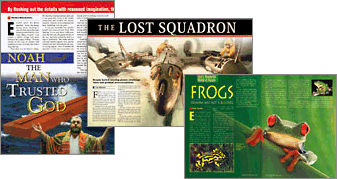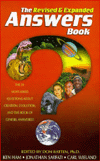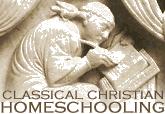Text Only
(Printer-Friendly)
Contents
Introduction
Trivium
Grammar
Dialectic
Rhetoric
Homeschool
curriculum
CCH FAQ
CE Links
Favorite
Reciprocal
What’s New
About CCH
Search CCH
Art History

Classical Christian
Homeschooling:
Classical Education
at Home
WebMaster:
Christine
Miller
Classical Christian
Homeschooling Online Catalog: Teacher’s Science Resources
www.clas...ling.org/curriculum/science-teacher.html
This page last revised:
May 2003
Copyright
© 1997-2003 |
Teacher’s
Science Resources
Grammar Stage: Nature Study
Resources for parents and teachers which help us help our children discover, identify,
classify, and wonder at God’s beautiful natural world.
Dialectic Stage: Origins Science
Resources for parents and teachers which help us help our children grow in understanding
and discovery of general science, as well as the issues involved in the origins debate.
Rhetoric Stage: History, Philosophy &
Nature of Science
Even though we might have studied some science in our own schooling, most of us have had
little instruction in the fascinating questions involved in the nature of science, the
philosophy of science. These questions have profound implications about the authority of
science in our lives, and are of prime significance.
Grammar Stage: Nature Study
 Field Trips Field Trips
Jim Arnosky
Subtitled: Bug Hunting, Animal Tracking, Bird-watching, Shore Walking.
This four-part introduction includes sufficient information, both basic and specific, to
prepare and guide a family or group on several enjoyable nature hikes. Arnosky presents
general descriptions of life cycles and species identification; items needed for
successful observation; and precautionary measures to ensure safety from tick bites,
stinging insects, birds protecting their young, and powerful animals. Designed as a
scientific notebook, besides Arnosky’s beautiful and detailed illustrations, he
provides sample notebook pages for budding scientists to record observations and drawings.
 Keeping a Nature Journal Keeping a Nature Journal
Clare Walker Leslie & Charles E. Roth
Subtitled: Discover a Whole New Way of Seeing the World Around You. In
this inspiring and easy to use book, Clare Walker Leslie and Charles E. Roth offer simple
techniques to give first-time journal-keepers the confidence to go outside, observe the
natural world, and sketch and write about what they see. At the same time, they motivate
long-time journal-keepers to hone their powers of observation. Using the methods the
authors have developed over years of journaling and teaching, this guidebook provides
inspiration, examples, and step- by- step drawing instructions to allow anyone to begin
recording the natural world on paper. This book is best for first time nature journalers.
Clare Walker Leslie is a nationally acclaimed wildlife artist and naturalist and the
author of many books; for more than 25 years she has taught nature journaling and field
sketching to students of all ages. Charles E. Roth is a science and environmental educator
and the author of twenty books. He served as Director of Education for the Massachusetts
Audubon Society for many years.
 Sierra Club Guide to
Sketching in Nature Sierra Club Guide to
Sketching in Nature
Cathy Ann Johnson
An inspiration for the naturalist, this practical, readable work focuses
on drawing and sketching the natural world while out in the natural world. Lavishly
illustrated, this sketching and watercolor primer features 280 examples of Johnson’s
work in black and white and color. Use the step- by- step instruction and exercises as a
guide to help learn to record outdoor nature studies -- in field, forest, or backyard --
in the nature journal. The emphasis is on the medium of pencil and paintbrush. The book
includes a helpful source list for art suppliers, national art workshops, and a useful
bibliography. This book is best for those who have done some nature journaling, and want
to hone their skills.
 Kingdoms of Life: Classification Kingdoms of Life: Classification
Bridget Anderson
More than two million different species of organisms live on Earth - in
all kinds of climates and places, ranging from the freezing North Pole to hot and steamy
jungles, and from the highest mountains to the nethermost depths of the oceans. How do we
keep track of the teeming abundance of life on Earth? Throughout history, humans have
always been busy naming and classifying all living things. That process continues today.
The Kingdoms of Life: Classification explores the amazing diversity of life on Earth and
details one way scientists currently organize their records to make sure that no organism
is left unnamed and unclassified. This is an excellent introduction to classification for
children. Scientific terms are introduced in a clear manner and defined in context in the
text, but can also be found in the glossary in the back of the book. This new science
series, produced in conjunction with the American Museum of Natural History, presents each
topic in interesting easy- to- understand text and illustrations.
 DK Nature Encyclopedia DK Nature Encyclopedia
DK Publishers
From the smallest single-celled organisms to the greatest mammals of land
and sea, The DK Nature Encyclopedia describes in outstanding detail the rich
diversity of life on Earth. Magnificently illustrated, this wonderful resource explores
each major plant and animal group, including flowering plants, birds, reptiles, insects,
fish, and mammals. Thematic sections cover topics as varied as reproduction and survival,
photosynthesis and communication. It also includes classification charts (!) and a
glossary of science terms. Organized into sections -- The Natural World, How Living Things
Work, Ecology, Classification, Plants, and Animals -- the Nature Encyclopedia is a perfect
reference for anyone curious about organisms, ecosystems, and the scientists who study
them. Includes references to molecules-to-man evolution as fact.
 DK Science Encyclopedia DK Science Encyclopedia
DK Publishers
Packed with facts, figures, and statistics in four key areas -- Chemistry
& Physics, the Living World, the Earth & Weather, and Space -- includes more than
1,000 full-color maps, photographs, diagrams, charts, and illustrations. The full page and
double spread entries are organized thematically -- much more useful than alphabetical
entries for making connections and thinking about whole systems. Every entry has accurate,
well-written text cross-indexed to related pages and to the “Fact Finder”
section in the back, with charts, tables, and maps to use with each section. A glossary
and index round out this thorough package. Caveat for the Living World section: takes the
premise of molecules-to-man evolution as fact, and this colors the entire section. The
sections on the non-living world are wonderful.
 Everyday Science Sourcebook Everyday Science Sourcebook
Lawrence Lowery
Subtitled: Ideas for Teaching in the Elementary and Middle Schools. This
huge sourcebook (over 400 pages!) is a compendium of science experiments and
demonstrations, with instructions, that show every conceivable scientific concept
imaginable. More than 1000 activities, many illustrated, use simple household materials,
organized for easy access. Experiments cover six broad categories: inorganic matter,
organic matter, energy, inference models, technology, and instructional apparatus (like
making an alcohol burner for use in simple chemistry experiments). The demonstrations and
experiements include extensive background and teaching notes.

Dialectic Stage: Origins Science
 Creation Magazine Creation Magazine
Answers in Genesis; Dr. Carl Wieland, editor
Creation Ex Nihilo is a family magazine about God’s Word and
God’s world--science and creation. It is published quarterly by Answers in Genesis. This
magazine contains fascinating feature stories every issue on various aspects of creation
science and Biblical history and archaeology. The articles are written by highly
credentialed creation scientists and other qualified authors, with laymen in mind
(technical terms and discussions are explained and diagrammed in side-bars). They keep
tabs on the current news in evolutionary theory and report on their
“breakthroughs” in a way you won’t find in the morning newspaper. Recent
feature articles covered such topics as Design and Natural Selection in Bears,
Evolution’s
 Inherent Racism,
Did Australia’s Aborigines See Dinosaurs?, Granites -- They Don’t Need Millions
of Years to Cool, Heirloom Plants -- Hostile to Evolution, Exploding the Big Bang Myth,
interviews with top researchers and scientists, articles to help believers defend their
faith, and more, more, more. Creation contains the breaking discoveries that newspapers
and National Geographic won’t cover. Very highly recommended for the entire trivium,
and especially necessary for the dialectic stage! Inherent Racism,
Did Australia’s Aborigines See Dinosaurs?, Granites -- They Don’t Need Millions
of Years to Cool, Heirloom Plants -- Hostile to Evolution, Exploding the Big Bang Myth,
interviews with top researchers and scientists, articles to help believers defend their
faith, and more, more, more. Creation contains the breaking discoveries that newspapers
and National Geographic won’t cover. Very highly recommended for the entire trivium,
and especially necessary for the dialectic stage!
 What’s Darwin Got to
Do with It? What’s Darwin Got to
Do with It?
Robert Newman, John L. Wiester, Janet & Jonathan Moneymaker
Subtitled: A Friendly Conversation About Evolution. “What’s
Darwin got to do with it? When it comes to evolution, quite a bit! But many people
don’t understand Darwin, creationism, and intelligent design.” This book makes
sense of the differences by following a friendly conversation between two professors on
evolution and what science can explain about life. Throughout the conversation, logic is
introduced, explained, and logical fallacies (commonly made during debates about origins)
are highlighted and explained. Caveat: the book comes across as slightly disapproving of
young earth creation science, and more approving of intelligent design theory; and the
peppered moth story is used to explain a major element of darwinian theory (natural
selection), as it is used in school and university textbooks; however, since this book was
published the peppered moth story has been shown to be fraudulent. However, the
explanations of logical fallacies often made in debates, and the presentation of just what
darwinianism postulates is so clear that I thought it had to be included.
 The Answers Book The Answers Book
Don Batten, Ken Ham, Jonathan Safarti
Newly revised and expanded, The Answers Book provides answers to
the 20 most-asked questions about creation, evolution, and the book of Genesis. These are
the questions that molecules-to-man evolution taught as fact in modern schools have
raised: Does God exist? Did God really create everything in six days? What about the gap
theory? What about carbon-14 (radioisotope) dating? How can we see distant stars in a
young universe? How did bad things come about? What about the arguments for evolution? Who
was Cain’s wife? Who were the “sons of God” and/or the
“nephilim”? Was Noah’s Flood global? What about continental drift? What
about all the water for Noah’s Flood? How did all the animals fit on the ark? How did
marine animals survive the flood? Where are all the human fossils? What about the Ice Age?
How could animals get to places like Australia? How did the different races arise? What
happened to the dinosaurs? Where can I go to learn more? The answers are extensively
footnoted, and are written to be understood by the layman. This will help parents answer
and lead discussions into most of the questions dialectic stage children might bring up.
For more answers, I recommend the resources suggested in the Origins Science Debate page, and also the Answers in Genesis website
maintains an extensive question and answer section with links to many articles which go into
further detail.

Rhetoric Stage: History, Philosophy, & Nature of Science
The best books I have found on the history, philosophy, and nature of
science are already part of the Rhetoric stage science curriculum: The Biotic Message, Philosophy of Science and Belief in God,
and Christianity and the Nature of
Science. This study is of personal interest to me, and I am constantly looking for the
best material written on the subject. When I find additional resources for the teacher and
parent, I will add them here.

Using the Online Catalog
 This online catalog is made possible through an association with Barnes&Noble.com. Clicking on the book title or book cover will take
you to Barnes&Noble.com’s information page about that book. You can look at its
price, availability, any discounts currently taken for that title, reviews of the book,
and other information, as well as order it if you decide to purchase the book. You can
even place books in your shopping cart and save them for purchase at a later time. You can
continue to add or delete books from your shopping cart until you are satisfied with your
order and ready to purchase. Clicking on any link to Barnes&Noble.com will open a new
window; to return to CCH, click on the “Window” menu on your browser’s menu
bar, and choose Classical Christian Homeschooling. This online catalog is made possible through an association with Barnes&Noble.com. Clicking on the book title or book cover will take
you to Barnes&Noble.com’s information page about that book. You can look at its
price, availability, any discounts currently taken for that title, reviews of the book,
and other information, as well as order it if you decide to purchase the book. You can
even place books in your shopping cart and save them for purchase at a later time. You can
continue to add or delete books from your shopping cart until you are satisfied with your
order and ready to purchase. Clicking on any link to Barnes&Noble.com will open a new
window; to return to CCH, click on the “Window” menu on your browser’s menu
bar, and choose Classical Christian Homeschooling.
Sometimes books go out of print, or the publisher runs out of stock. Any
book not available from Barnes&Noble.com for any reason can be searched using AddAll.com, a book shopping site which
will scan Barnes&Noble.com as well as Amazon.com, Powell’s Books, Book Close Outs
and many other new and used book sites. Be sure to also check BookFinder.com for out of print book
searches.
Still have questions? Ask
me!

 
|

